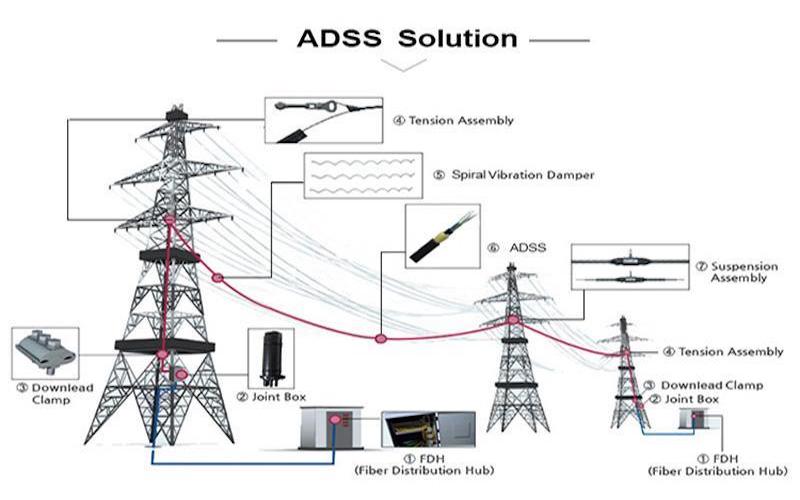How to distinguish the advantages and disadvantages of ADSS optical cables?
1. Outer: Indoor fiber optic cables generally use polyvinyl or flame-retardant polyvinyl. The appearance should be smooth, bright, flexible, and easy to peel off. Inferior fiber optic cable has a poor surface finish and is easy to adhere to tight sleeves and kevlar.
Similarly,The PE sheath of the outdoor optical cable should be made of high-quality black polyethylene. The completed ADSS cable the outer skin is smooth, bright, uniform in thickness, and free of bubbles. The outer skin of inferior fiber optic cables is generally produced from recycled materials. The skin of this kind of fiber optic cable is rough. Because there are many impurities in the raw materials, you can see that there are many tiny holes in the outer skin of the fiber optic cable, which will crack and seep after a period of laying.
2. Optical fiber: Formal optical fiber cable manufacturers generally use grade A cores from large factories. Some low-cost and inferior optical cables usually use grade C, grade D optical fibers and smuggled optical fibers from unknown sources. These optical fibers take a long time to leave the factory due to their complex sources. It is often damp and discolored, and single-mode fibers are often mixed in multi-mode fibers.
3. Reinforced steel wire: The steel wire of the outdoor optical cable of the regular manufacturer is phosphated, and the surface is gray. Such steel wire does not increase hydrogen loss, rust, and has high strength after being cabled. Inferior fiber optic cables are generally replaced by thin iron or aluminum wires. The identification method is easy-it is white in appearance and can be bent at will when it is pinched in the hand.
4. Loose tube: The loose tube of the optical fiber in the optical cable should be made of PBT material, which has high strength, no deformation, and anti-aging. Inferior fiber optic cables usually use PVC material to produce sleeves. Such sleeves have a very thin outer diameter and can be flattened by a pinch.
5. Cable Filling Compound: The fiber Filling Compound in the outdoor optical cable can prevent the optical fiber from oxidizing. Due to moisture ingress and dampness, there is very little fiber Filling Compound used in the inferior fiber, which seriously affects the life of the fiber.
6. Aramid: Also known as Kevlar, it is a high-strength chemical fiber. It is currently used most in the military industry. Indoor optical cables and (ADSS) both use aramid yarn as reinforcement. Because aramid costs are high, inferior indoor optical cables generally have a very thin outer diameter, which can save costs by reducing a few strands of aramid. The optical fiber cable is easy to be broken when passing through the tube. ADSS optical cable is used to determine the number of strands of aramid in the optical cable according to the field span and wind speed per second. So please double check and confirm carefully before construction.


